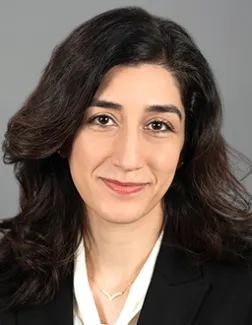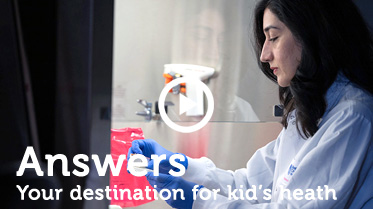

Information
Related Research Units
Research Overview
Over the past four decades, Tissue Engineering has advanced significantly, yet physiologically relevant and functional models of human tissues and organs remain limited. Such models are essential for understanding complex disease mechanisms, developing effective therapeutics, and restoring lost tissue function.
Dr. Izadifar’s laboratory takes a multidisciplinary approach—integrating advanced engineering, cell biology, biofabrication, biomaterials, and life sciences—to recreate the structural and functional properties of human urogenital and reproductive tissues in vitro. These conditions, including chronic infections (UTIs, BV, STDs) and tissue abnormalities, are difficult to treat and disproportionately affect vulnerable populations such as children, women, and the elderly. Limited understanding of the underlying physiology and pathophysiology has hindered effective treatments, diagnostics, and preventive strategies, resulting in high healthcare costs and reduced patient quality of life.
To address this, the lab develops advanced in vitro systems such as Organ-on-Chip to model urinary and reproductive tract mucosa. These platforms enable investigation of host–microbiome–pathogen interactions and risk factors in clinically relevant contexts, advancing both fundamental knowledge and preclinical drug testing. In parallel, the lab employs biofabrication techniques, including 3D bioprinting and stem cell–based methods, to engineer structurally and functionally viable tissues with the ultimate goal of restoring hollow organ function in patients with traumatic, congenital, or chronic defects.
Research Background
Dr. Izadifar has over a decade of multidisciplinary research experience in Tissue Engineering, Regenerative Medicine, in vitro tissue models, and non-invasive monitoring technologies. During her PhD, she pioneered a 3D bioprinting method to fabricate biomimetic, cell-laden cartilage and osteochondral constructs that closely replicate native articular cartilage in biology, structure, and mechanics, with the goal of advancing tissue repair and clinical translation. She also introduced synchrotron X-ray imaging approaches for non-invasive, longitudinal monitoring of engineered cartilage and bone tissues post-transplantation, providing powerful tools to assess engraftment and repair success.
As a postdoctoral researcher at the Wyss Institute for Biologically Inspired Engineering at Harvard University, Dr. Izadifar led the development of Organ-on-a-Chip models of the human cervix (Cervix Chip) to study host–microbiome interactions under healthy and dysbiotic conditions. This model uniquely recapitulates the structural, biochemical, functional, and physiological responses of cervical tissue to environmental, hormonal, and microbial cues. She also spearheaded the integration of analytical sensors into Organ Chips, enabling real-time, non-invasive monitoring of metabolic functions and enhancing their utility for drug testing and disease modeling.
Dr. Izadifar is also affiliated with the Wyss Institute for Biologically Inspired Engineering at Harvard University.
Publications
- Human Cervix Chip: A Preclinical Model for Studying the Role of the Cervical Mucosa and Microbiome in Female Reproductive Health. Bioessays. 2025 May 22; e70014. View Abstract
- A Human Cervix Chip for Preclinical Studies of Female Reproductive Biology. Bio Protoc. 2025 Apr 05; 15(7):e5262. View Abstract
- Cervical mucus in linked human Cervix and Vagina Chips modulates vaginal dysbiosis. NPJ Womens Health. 2025; 3(1):5. View Abstract
- Identification of pharmacological inducers of a reversible hypometabolic state for whole organ preservation. Elife. 2024 Sep 24; 13. View Abstract
- Organ chips with integrated multifunctional sensors enable continuous metabolic monitoring at controlled oxygen levels. Biosens Bioelectron. 2024 Dec 01; 265:116683. View Abstract
- Mucus production, host-microbiome interactions, hormone sensitivity, and innate immune responses modeled in human cervix chips. Nat Commun. 2024 May 29; 15(1):4578. View Abstract
- Immune-privileged tissues formed from immunologically cloaked mouse embryonic stem cells survive long term in allogeneic hosts. Nat Biomed Eng. 2024 04; 8(4):427-442. View Abstract
- Cytocentric measurement for regenerative medicine. Front Med Technol. 2023; 5:1154653. View Abstract
- Vaginal microbiome-host interactions modeled in a human vagina-on-a-chip. Microbiome. 2022 11 26; 10(1):201. View Abstract
- Modeling mucus physiology and pathophysiology in human organs-on-chips. Adv Drug Deliv Rev. 2022 12; 191:114542. View Abstract
- Tannic acid: a versatile polyphenol for design of biomedical hydrogels. J Mater Chem B. 2022 08 10; 10(31):5873-5912. View Abstract
- Modeling pulmonary cystic fibrosis in a human lung airway-on-a-chip. J Cyst Fibros. 2022 07; 21(4):606-615. View Abstract
- An Introduction to High Intensity Focused Ultrasound: Systematic Review on Principles, Devices, and Clinical Applications. J Clin Med. 2020 Feb 07; 9(2). View Abstract
- Polyphenol uses in biomaterials engineering. Biomaterials. 2018 06; 167:91-106. View Abstract
- Traditional Invasive and Synchrotron-Based Noninvasive Assessments of Three-Dimensional-Printed Hybrid Cartilage Constructs In Situ. Tissue Eng Part C Methods. 2017 03; 23(3):156-168. View Abstract
- Modulating mechanical behaviour of 3D-printed cartilage-mimetic PCL scaffolds: influence of molecular weight and pore geometry. Biofabrication. 2016 Jun 22; 8(2):025020. View Abstract
- Using synchrotron radiation inline phase-contrast imaging computed tomography to visualize three-dimensional printed hybrid constructs for cartilage tissue engineering. J Synchrotron Radiat. 2016 05; 23(Pt 3):802-12. View Abstract
- Analyzing Biological Performance of 3D-Printed, Cell-Impregnated Hybrid Constructs for Cartilage Tissue Engineering. Tissue Eng Part C Methods. 2016 Mar; 22(3):173-88. View Abstract
- Data of low-dose phase-based X-ray imaging for in situ soft tissue engineering assessments. Data Brief. 2016 Mar; 6:644-51. View Abstract
- Low-dose phase-based X-ray imaging techniques for in situ soft tissue engineering assessments. Biomaterials. 2016 Mar; 82:151-67. View Abstract
- Visualization of ultrasound induced cavitation bubbles using the synchrotron x-ray Analyzer Based Imaging technique. Phys Med Biol. 2014 Dec 07; 59(23):7541-55. View Abstract
- Synchrotron imaging techniques for bone and cartilage tissue engineering: potential, current trends, and future directions. Tissue Eng Part B Rev. 2014 Oct; 20(5):503-22. View Abstract
- Computed tomography diffraction-enhanced imaging for in situ visualization of tissue scaffolds implanted in cartilage. Tissue Eng Part C Methods. 2014 Feb; 20(2):140-8. View Abstract
- Strategic design and fabrication of engineered scaffolds for articular cartilage repair. J Funct Biomater. 2012 Nov 14; 3(4):799-838. View Abstract
